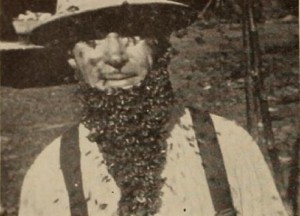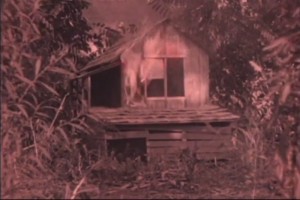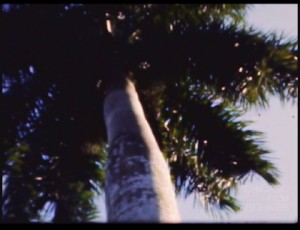"From Australia James A. Sherlock sent 'Harbor,' a picture in Kodachrome. While the picture was well made, finely edited and cut, it suffered from uneven coloring and density. Undoubtedly much was taken with the earlier Kodachrome which darkened rapidly after it was exposed if it was not rushed to the processing plant." American Cinematographer, Feb. 1937, 73.

"Out of his personal experience, C. H. Bacon has produced an intimately documented film study of honey bees, both from the viewpoint of the keeper and that of the bees. Included are some extraordinary detail shots of life within the hive — the birth, life and death of a queen bee, construction of a hive, protection against natural enemies and the production of honey. Happy touches of light humor balance the more serious aspects of the subject, while the bear sequence at the end provides an amusing climax. Exceptionally well lighted and capably photographed, the picture provides entertaining and instructive screen fare." Movie Makers, Dec. 1949, 469-470.
"Footage of a day on the fells; the car pulls out of the driveway, followed by scenes of the landscape and family members." (NWFA Online Database)
"Burnford's picture was not only good from the documentary angle, but was very well photographed. It showed the lumbering industry in England starting with the felling of trees and then through the mills and then to the things built of wood, showing the most dramatic incidents." American Cinematographer, Feb. 1937, 73.
"Opens with various mature trees shown in full leaf. Men remove the bark from lower part of mature hardwoods and fell them with axes and long, two-man saws. Montage of falling trees. Bark prised from the fallen trunks. The torn-out root-base is sawn off and the trunks dragged from the forest by a team of heavy horses. The team drags the trunks onto the cart with the chain and the very largest trunks taken on a five-horse cart. At the lumber yard a large bandsaw divides the trunks in half and these are sliced. Men are show playing darts with the resulting, shaped, dartboards. SUB-TITLE - Harvest from over the seas. A ship - 'Karin Thorden' - docks, her decks stacked with timber already cut. Cranes transfer timber to barges, rafts and lorries. SUB-TITLE - For joinery. At the woodwork shop, specialised machines divide the wood into still smaller pieces and cut mortises and tenons and window frames are assembled. SUB-TITLE - For building. Workmen, on site, put up the roof timbers of a house. SUB-TITLE - For paper. Slow mixing of wood pulp. Smoothed out and rolled, dried and calendared. The large, wide rolls progress through the huge machines and sheets are slid off. SUB-TITLE - For music. Violin and Cello makers at work with hand tools, then a finished violin is played. SUB-TITLE - For flying. A bi-plane takes off. At the aeroplane factory, sections of the wooden wing frames are assembled, wing coverings doped. SUB-TITLE - For sailing. Large, J-class yachts tacking. J KI 7 featured. Finally, there are shots of mature, forest trees" (EAFA Database).
Un homme trouve une lettre de rendez-vous destinée à une jeune femme qui, du correspondant, ne connaît que le nom d'emprunt. Tourné à Paris. A man finds a letter arranging a rendezvous intended for a young woman who only knows the correspondent's assumed name. Filmed in Paris.
Presumably a documentary or travelogue about Hatley Park and Hatley Castle, the Edwardian estate and mansion built in 1906 for James Dunsmuir, the Lieutenant-Governor of British Columbia. In 1966, when this film was made, the estate was home to Royal Roads Military College.

"Supernatural thriller made by a teenage girl." Filmpreservation.org
"15 year old Mary is bored. With her parents permission she writes her chum Martha to come for summer vacation and they will make a movie. In the meantime two convicts escape from the nearby prison. To frighten the girls away the convicts decide to play ghosts. Film ends with posse, capture and hand colored inferno." Oregon Historical Society.
"Havana, 400 ft., 16 mm., made by Herman Danz, is outstanding among the recent travel and vacation films rather more for its photographic quality than for its continuity. The film presents Havana, its harbor, street scenes and architecture. Mr. Danz has avoided almost all of the amateur's pitfalls, for the film contains no instances of wobbly "pamming," [sic] jerky shots or unfortunate camera angles, encountered so often in films of foreign cities. Even more important, the treatment is impersonal throughout and purely intimate shots were either not taken or were edited out to be included in a family reel. Thus the film is the type that strangers and friends can enjoy as much as a professional treatment of the same subject. Filters used with panchromatic film brought out cloud formations hanging over the picturesque harbor and emphasized the colorful architectural detail of the buildings." Movie Makers, Dec. 1930, 758-759.

"A short travelogue film of Havana, Cuba shot for the Metro Movie Club, a Chicago amateur film club." Chicago Film Archives.
"Film contains Sid and Charlotte's heads floating on a black background. They talk about the kinds of T.V. shows they like and it ends with Sid saying the punch line 'I can't stand a show that is all talking heads'." UCLA Film & Television Archive.
Total Pages: 203